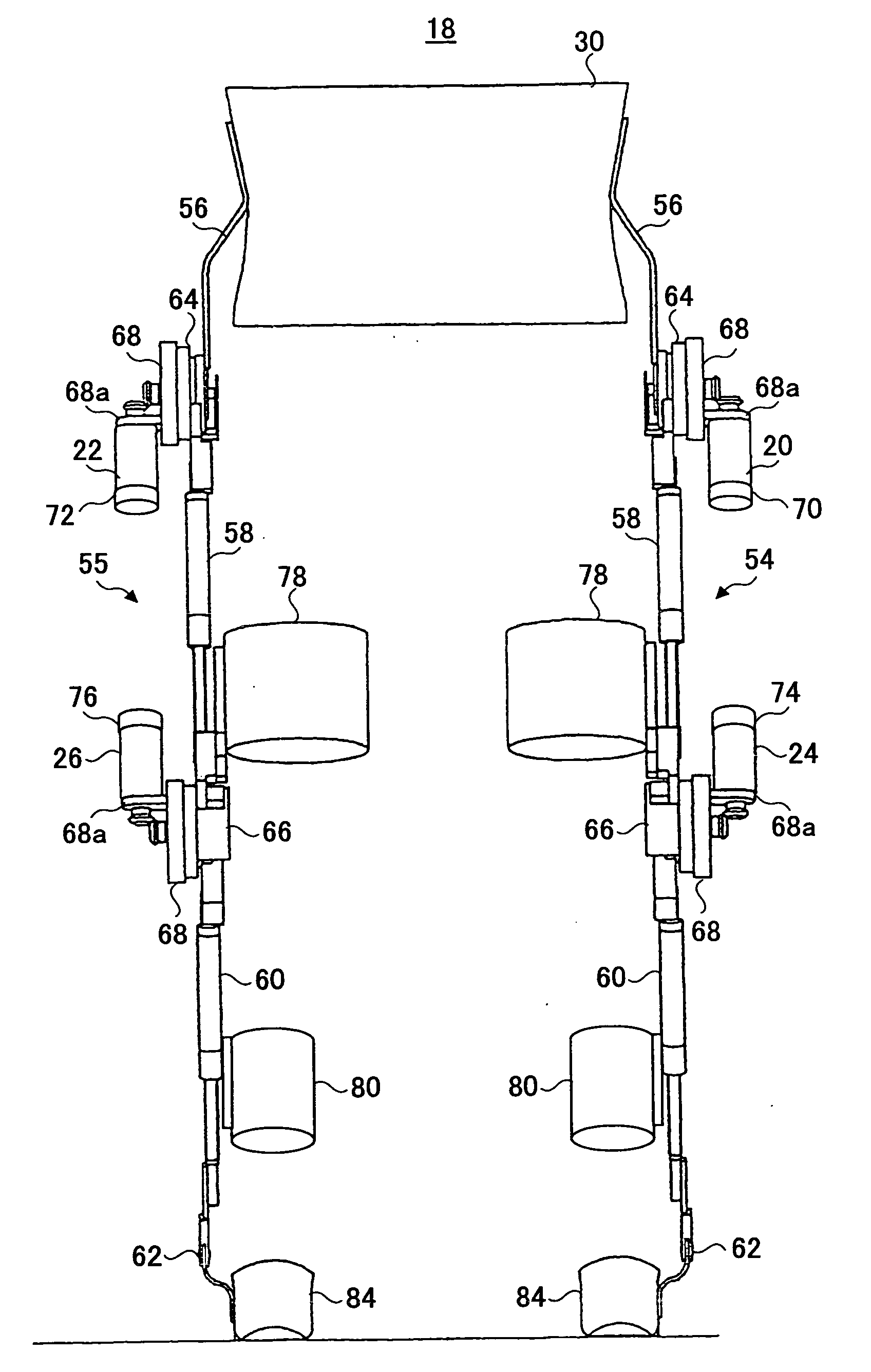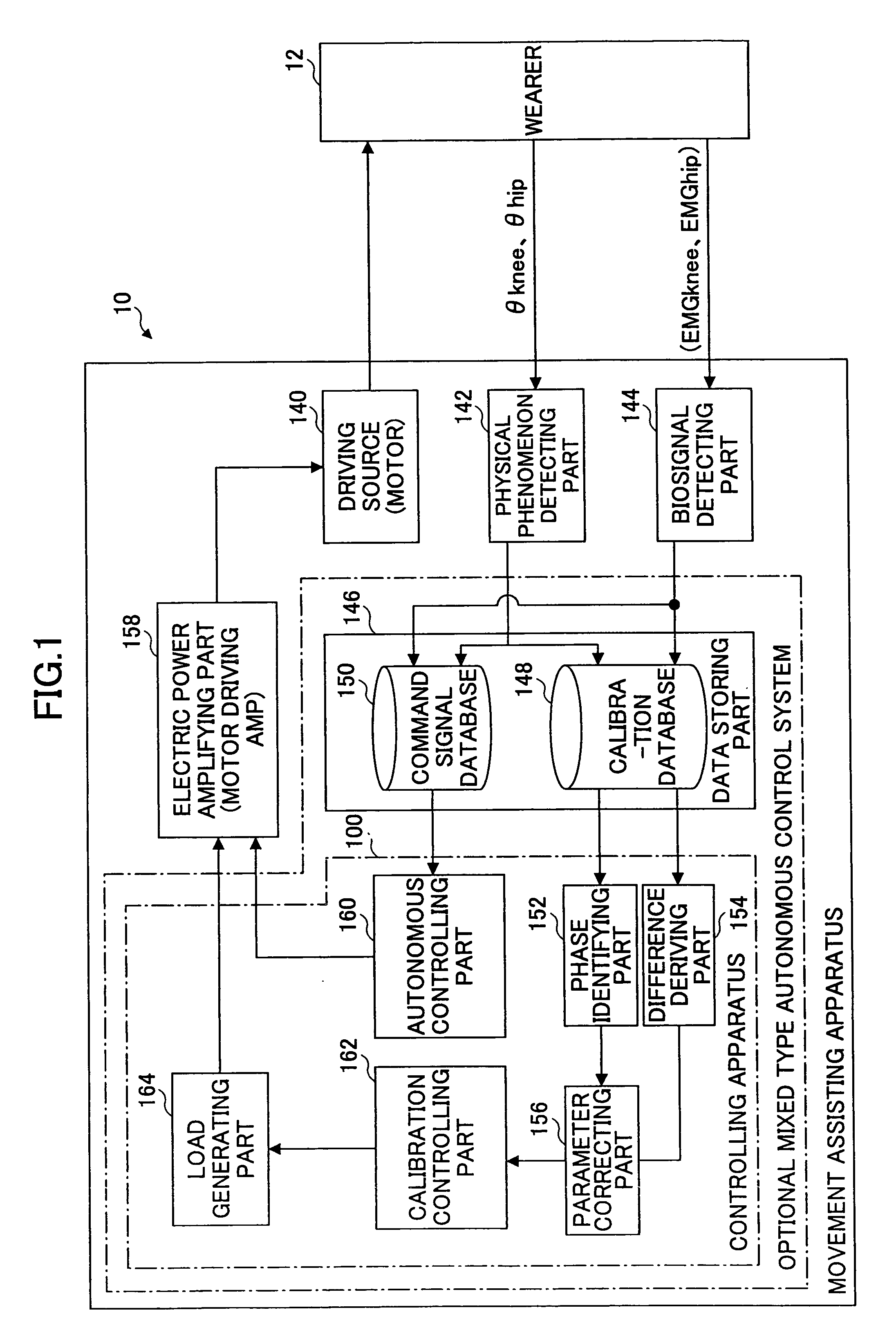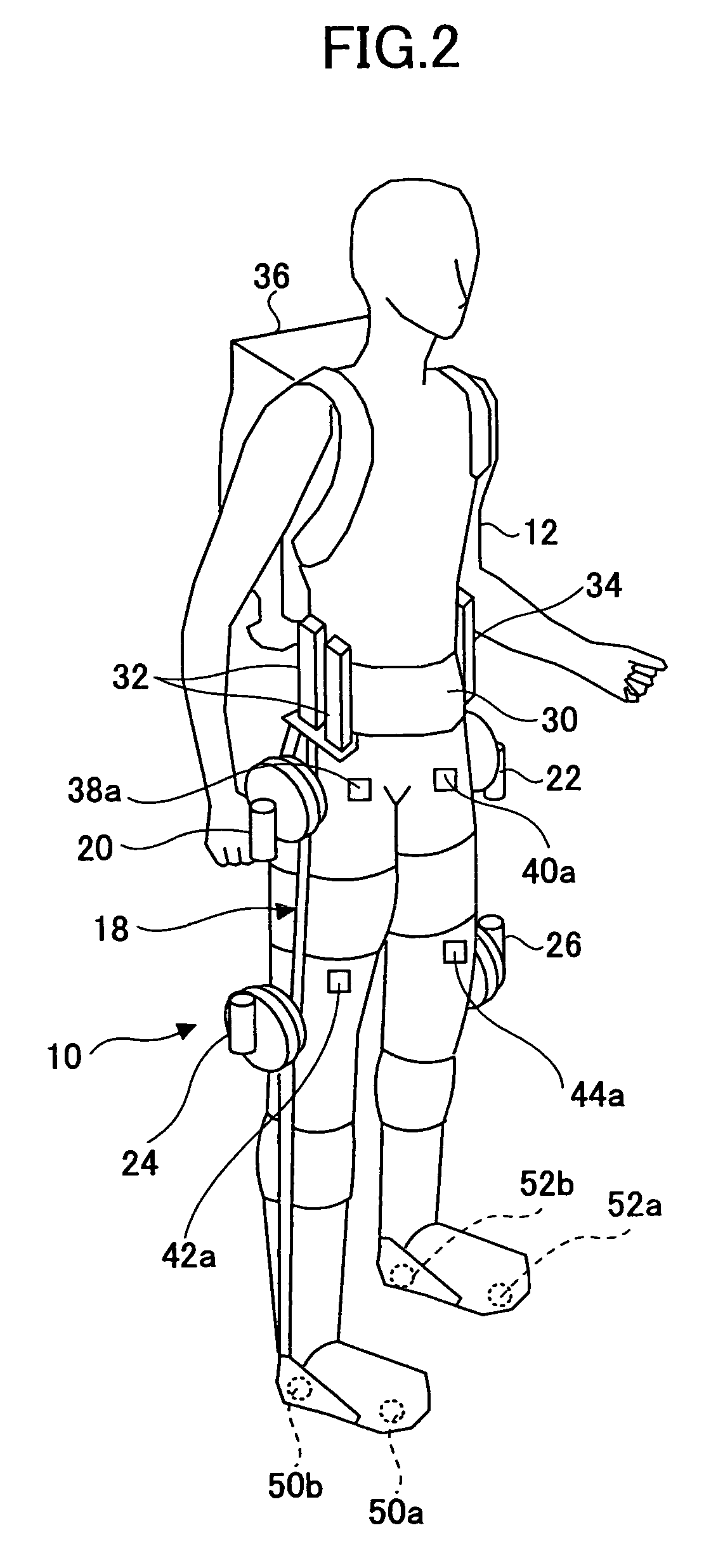Wearing Type Behavior Help Device, Wearing Type Behavior Help Device Calibration Device, and Calibration Program
a technology of wearable type and help device, which is applied in the field of wearable type movement assisting apparatus, can solve the problems of adversely affecting users, affecting the user's comfort, and affecting the accuracy so as to improve the reliability of wearable type movement, reduce the time and effort required for calibration, and accurately apply.
- Summary
- Abstract
- Description
- Claims
- Application Information
AI Technical Summary
Benefits of technology
Problems solved by technology
Method used
Image
Examples
first embodiment
[0099]FIG. 1 is a block diagram showing a control system applied to a wearable type movement assisting apparatus according to an embodiment of the present invention.
[0100]As shown in FIG. 1, a control system of a movement assisting apparatus 10 includes a driving source 140 for applying assisting force to a wearer 12, a physical phenomenon detecting part 142 for detecting the joint angle (physical phenomenon) corresponding to the movement of the wearer 12, and a biosignal detecting part 144 for detecting a myoelectric potential (biosignal) corresponding to muscular strength generated by the wearer 12.
[0101]A data storing part 146 is loaded with a calibration database 148 for correcting the parameter of a command signal (control signal) according to the detectivity of myoelectric potential (biosignal) corresponding to the muscular strength generated by the wearer 12 and a command signal database 150. It is to be noted that the calibration database 148 includes a first memory space (f...
PUM
 Login to View More
Login to View More Abstract
Description
Claims
Application Information
 Login to View More
Login to View More - R&D
- Intellectual Property
- Life Sciences
- Materials
- Tech Scout
- Unparalleled Data Quality
- Higher Quality Content
- 60% Fewer Hallucinations
Browse by: Latest US Patents, China's latest patents, Technical Efficacy Thesaurus, Application Domain, Technology Topic, Popular Technical Reports.
© 2025 PatSnap. All rights reserved.Legal|Privacy policy|Modern Slavery Act Transparency Statement|Sitemap|About US| Contact US: help@patsnap.com



